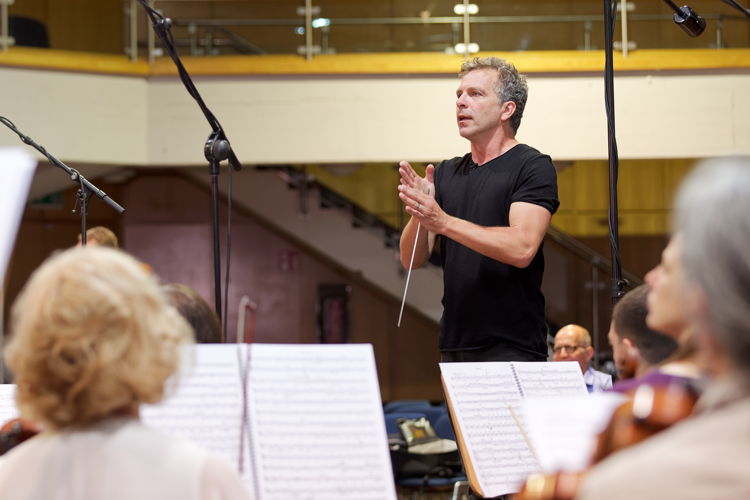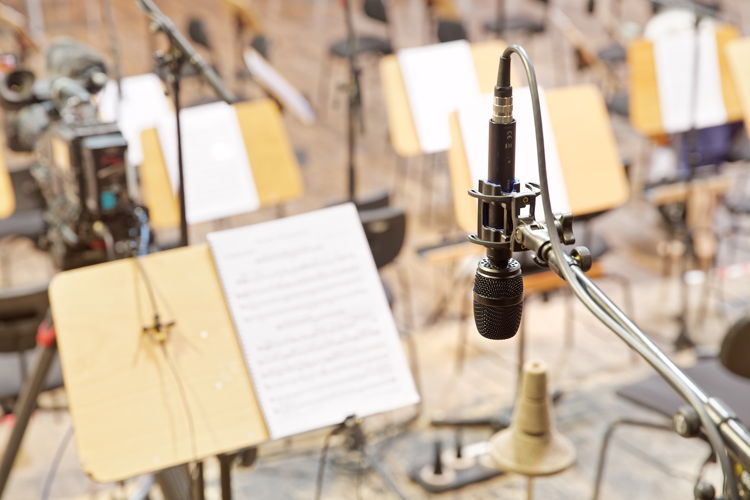Beethoven binaural
10. lokakuuta 2019

Audio recording with Sennheiser AMBEO VR Mics
In a unique event, Bonn’s Brückenforum was turned into a concert hall on June 17, 2019, as conductor Dirk Kaftan led the Beethoven Orchestra Bonn in a recording of excerpts of Beethoven’s 9th Symphony. For most of us, it is hard to imagine what it feels like to be in the midst of an orchestra – but now a new exhibition lets people experience this extraordinary perspective: From November, an immersive video and sound recording of the performance is becoming part of an exhibition in the LVR-LandesMuseum Bonn. Entitled “Music! Listen, Make, Feel. An interactive exhibition”, the experience lets visitors to acoustically take a seat at different positions in the orchestra and listen via headphones to the impressive soundscape from unfamiliar perspectives. In order to provide a convincing acoustic immersion experience, six Sennheiser AMBEO VR Mics were placed between the orchestra’s musicians during the recording in Bonn.
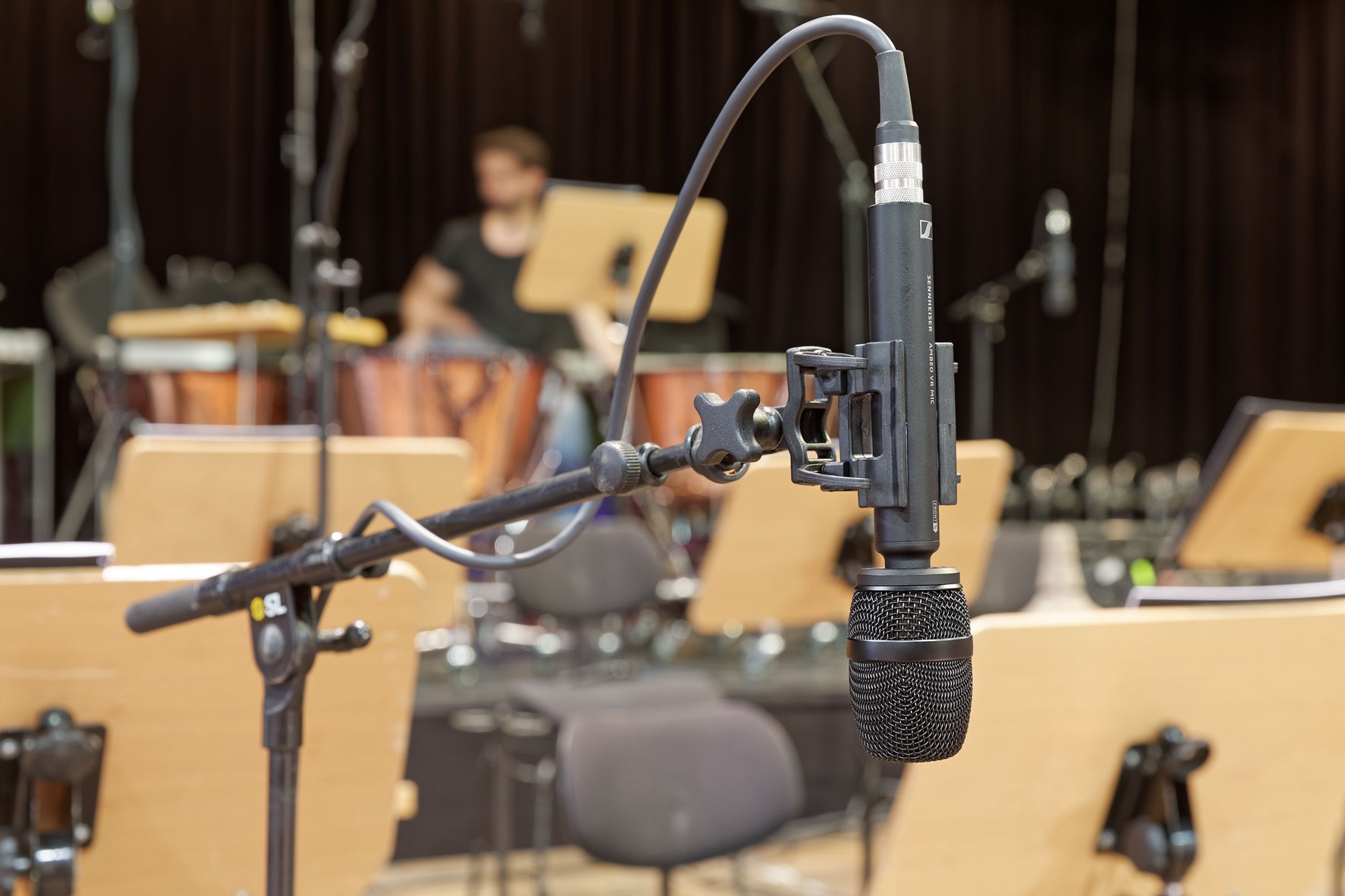
Right in the middle rather than on the edge
Within the orchestra, the six AMBEO VR Mics were positioned near the timpani, trombone, French horn, flute, viola and first violin with the capsules of the Sennheiser Ambisonics microphones pointing down. “Ideally, you would place the capsules exactly where the head of each instrumentalist is – of course, for obvious reasons, this is not possible,” explained Freek de Greef, the sound engineer who together with colleague Thomas Koopmans created the unique recording. “Musicians find it quite annoying if you place a microphone too close to them. We therefore decided to set it up so as not to impair the instrumentalists in their freedom of movement but still have the microphones with their marked front side pointing in the same direction as the musicians. For example, if the violinist was holding his or her instrument on the left side, we put the AMBEO VR Mic to the right of the player in the direction of the instrument, which provides a much more convincing sound during the recording!”
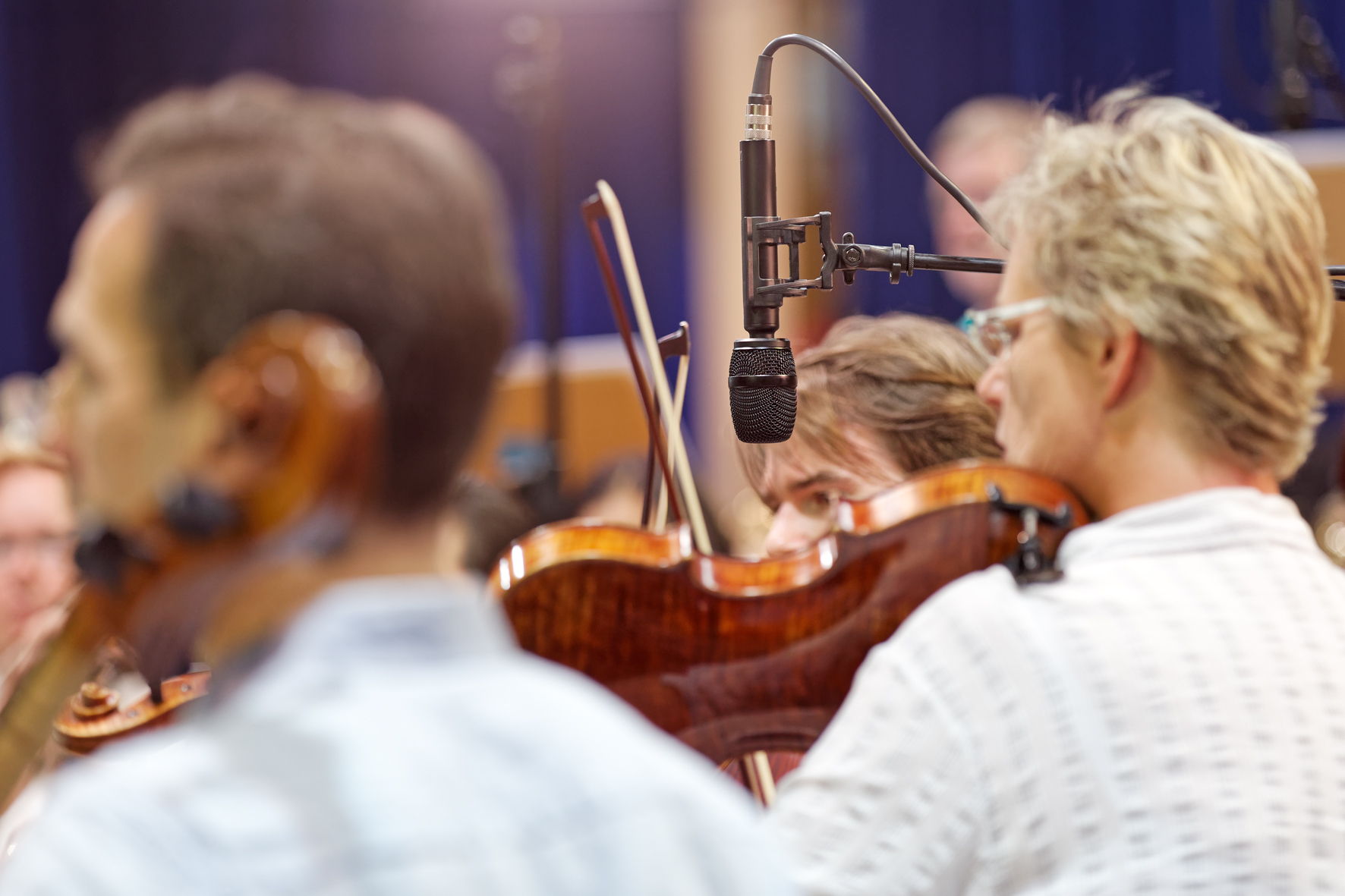
The AMBEO VR Mic in a musical context
Freek de Greef studied audio design at HKU (Utrecht University of the Arts) and completed his studies with a Master of Arts degree. Besides running his own company, De Greef Audio, he also works as a teacher in the field of audio design.
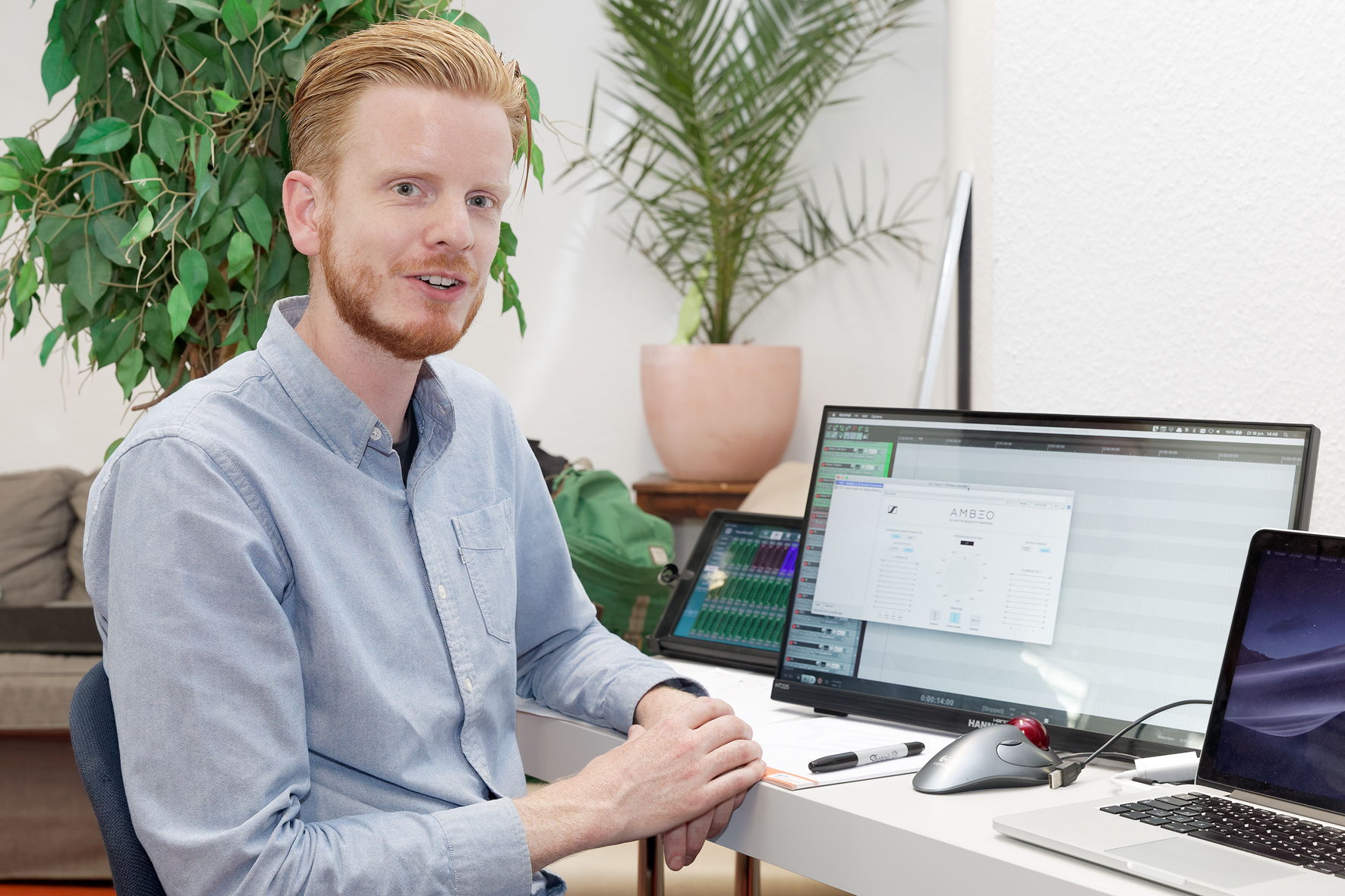
The experienced sound professional has already used the Sennheiser AMBEO VR Mics for other purposes: “Taking into account the diverse features and applications of the AMBEO VR Mics, the microphone can be considered extremely good value for money,” said Freek de Greef. “The AMBEO VR Mic is not only ideal for virtual reality in gaming applications, it also works great in a musical context! Due to its compact dimensions, the microphone is easy to position and the mounting brackets included work well: During the recording in Bonn, we mounted the microphones with the capsules facing down and partly on long extensions. At the beginning I was a little worried that they might slip out of their mounts. The grip in the shock mounts, however, is super strong and with regard to impact sound transmission there were no negatives relating to the suspended mikes. The sound of the AMBEO VR Mics is transparent and the full dynamics of musical performances are easy to capture. The sensitivity is pleasingly high with a very low noise floor, so that you do not have to over-amplify the microphone signals.”

From the first listen-through of the raw version of the recording, the realism of the sound was already surprising. Listening to the Ambisonics B format of the AMBEO VR Mic set up at the position near the flute, the bassoon sounded slightly oblique in the left ear and the clarinet diagonally behind in the right ear, even when the flute was not playing – in contrast to conventional recording concepts for classical music. If you have never sat between orchestra musicians during a concert, you may wonder how different the sound within the orchestra is compared to the typical listening position in the audience and to what extent individual musicians can hear their colleagues playing. The AMBEO VR Mic placed directly above the percussionist was able to transmit an impressive sound experience all along the line. The listener feels like he or she is in the middle between the timpani and hears the instruments of the other orchestra musicians as coming from the front.
Hyperrealism in the binaural sound field
During the recording, the use of Sennheiser AMBEO VR Mics was complemented by a conventional microphone set-up which consisted of main microphones in A/B and ORTF stereo (conductor place, audience space) as well as numerous spot microphones. During post-production, these signals will be used to enrich the sound impression of the AMBEO VR Mics if it is considered artistically necessary for the exhibition.

Freek de Greef talks about “hyperrealism”, meaning that the sound experience in the exhibition will be reproduced a bit more succinctly for listeners that are less technically experienced regarding sound than in a real orchestral environment. “With sound mixing, we start with the signals from the AMBEO VR Mics, which are essential for localization,” said Freek de Greef. “The additional mono and stereo signals from the other microphones are included in the binaural sound field by means of plug-ins. This is now no longer a totally natural reproduction of the sound events, but for the purposes of the exhibition, which is aimed at children and adolescents, it is certainly okay to emphasize individual sound sources to enhance the desired listening experience, while not overdoing it.”
High-end audio quality due to 24/96 recording
The analogue signals from the microphones were routed directly to stageboxes belonging to the digital mixing console and thus pre-amplified and digitized as close to the source as possible to prevent sound loss on the long cable paths to the control room provisionally located near the hall. In the sound control room, a compact digital audio mixing console was operated in combination with a DSP server. The pre-amplification for all four channels of each Sennheiser AMBEO VR Mic had been accurately equalized by Freek de Greef; the audio signals were fed into a DAW without further processing.
The Digital Audio Workstation recorded 48 channels with 24-bit word width at a sampling rate of 96 kHz. The Ambisonics A-format was converted to the Ambisonics B-format using the Sennheiser AMBEO A-B Converter plug-in and monitored via headphones using Noise Makers’ “Ambi Head” plug-in. Via the AMBEO A-B Converter, the recorded individual signals of the AMBEO VR Mics can be used flexibly in post-production to accommodate any changes to the exhibition concept.
Impulse responses for realistic spatiality
From an acoustic perspective, the approximately 1,000 square meter multifunctional hall of the Brückenforum in Bonn is not particularly well suited for complex recordings. “We positioned and aligned the microphones in such a way that a comparatively small area of the room was recorded,” said Freek de Greef. “In post-production, we will add space with an Ambi Verb HD from Noise Makers – the impulse responses on which this plug-in is based were recorded with a Sennheiser AMBEO VR Mic. Of course, it would have been easier to have a hall with better acoustics available, which would have allowed us to use more microphones with omni characteristics and possibly also record impulse responses to capture the local spatial sound. Bear in mind, however, that the goal of our recording activities was not a typical classical recording but a special recording for a special reproduction situation in an exhibition.”
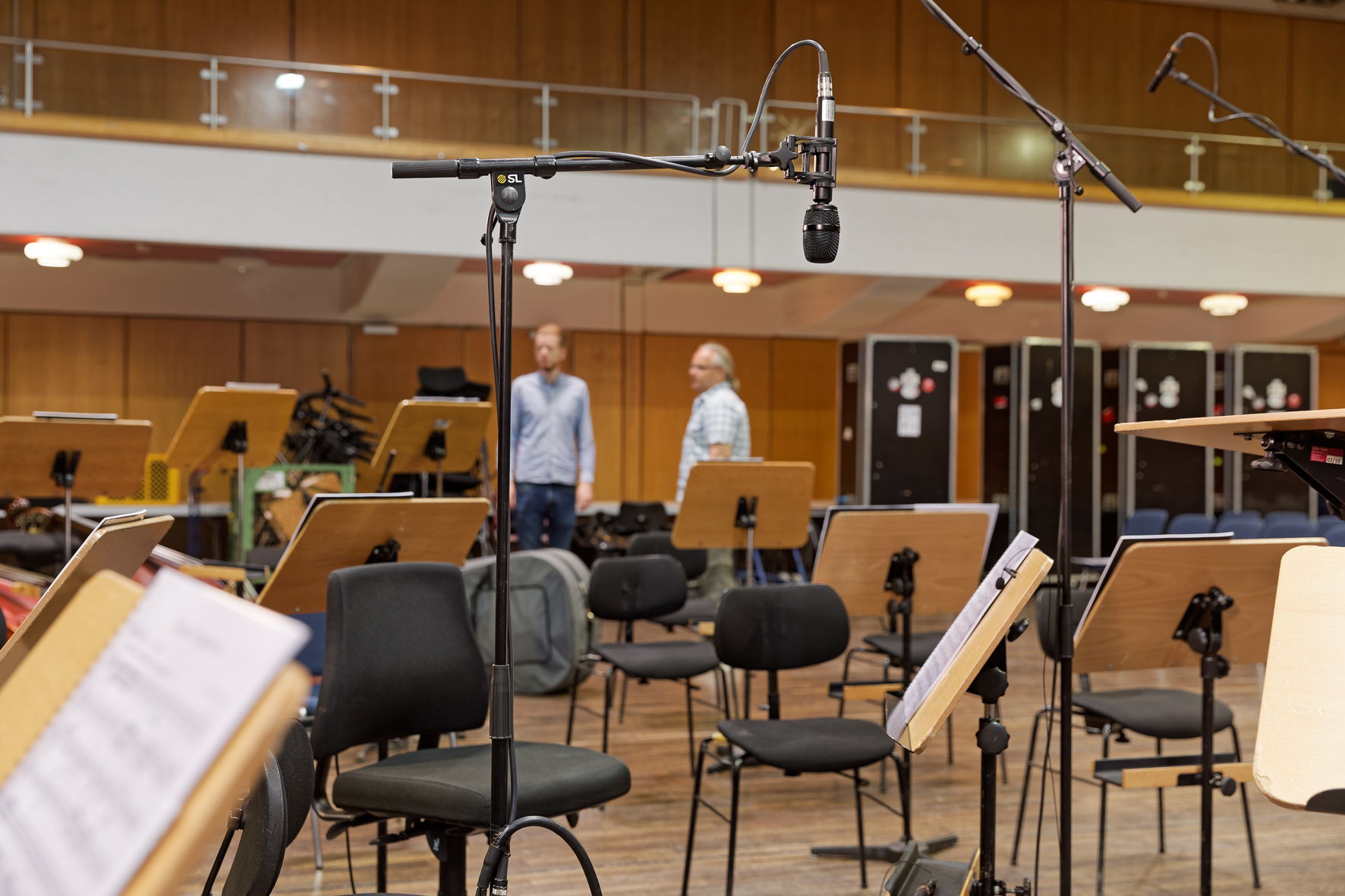
Participatory exhibition: the best way to celebrate Beethoven’s birthday
Ludwig van Beethoven’s 250th birthday in 2020 is a good reason to pay tribute to the composer in his birthplace of Bonn. Part of the anniversary programme is the interactive exhibition “Music! Listen, Make, Feel.” in the LVR-LandesMuseum Bonn, which is all about experiencing music together. Twenty-five interactive stations invite you to listen, to make and to feel music without necessarily having to master an instrument or having any knowledge of music – a curiosity about new sounds and experiences from Beethoven to Beyoncé is all you need.
The largest station in the exhibition is dedicated to the second movement of Beethoven’s 9th Symphony which can be heard via headphones in binaural 3D sound. “Our guests have the opportunity to sit down in the middle of the orchestra, to observe the conductor and to experience how a musician feels in different positions in the orchestra,” said Lothar Altringer, deputy director and exhibition director at the LVR-LandesMuseum Bonn. An elaborate (and costly) headphone head-tracking system is not provided. Instead, visitors will have to change seats to listen to the different sound impressions. Eight positions (first violin, viola, horn, timpani, trombone, flute, conductor, typical seat in the hall) are intended as binaural sound impressions and play recordings of eight different mixes created by Freek de Greef.
The exhibition, which is specifically targeted at children and adolescents, will open on November 20, 2019, and can be visited in Bonn until mid-September 2020. The travelling exhibition, which was developed in cooperation with NorthernLight and YiPP, will then tour other cities in Germany and the Netherlands. “The exhibition is supposed to get us excited about music but also makes it clear that music comes from joint activities and is part of our life,” said Lothar Altringer. “It is important that children and adolescents especially can follow musical events with high-quality sound and not just listen to MP3 files with cheap earphones. It therefore made sense to use the best available audio technology when recording with microphones from Sennheiser – otherwise the project would not have been worth the effort!”




